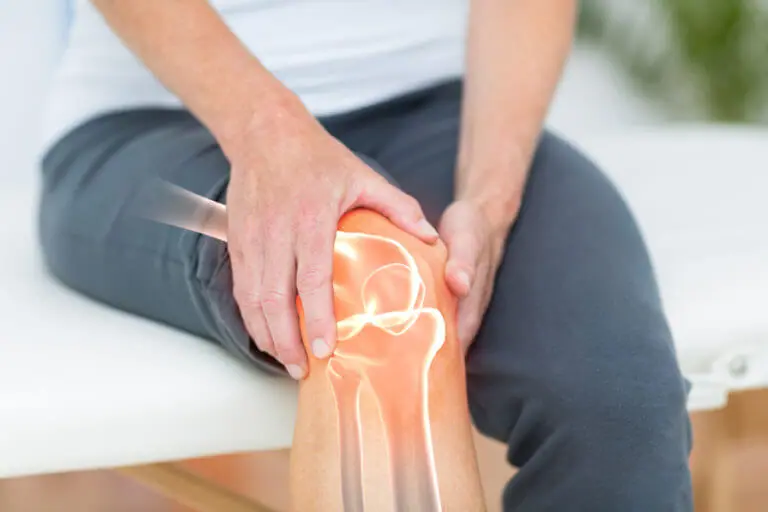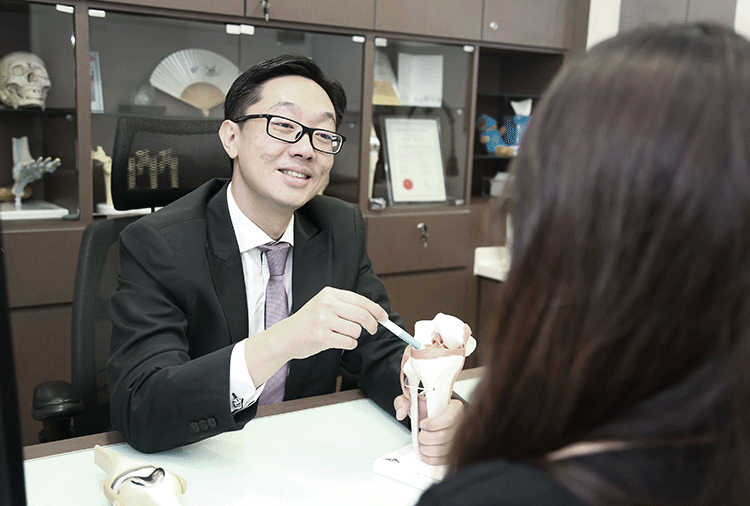Knee arthritis is a common condition that can significantly impact daily life, causing pain, stiffness, and reduced mobility. It primarily affects older adults but can also occur in younger individuals due to various factors.
What Is Knee Arthritis, And Why Is Treatment Important?
Knee arthritis is a degenerative condition where the cartilage in the knee joint wears down over time, leading to pain, swelling, and decreased range of motion. The most common types are osteoarthritis, caused by wear and tear, and rheumatoid arthritis, an autoimmune disorder that results in inflammation.
Treatment is important because it helps manage symptoms, improve joint function, and slow disease progression. Without proper treatment, knee arthritis can lead to severe pain and disability, making it difficult to walk, climb stairs, or perform everyday activities. Effective management through medications, physical therapy, lifestyle changes, and surgery can enhance life quality and maintain mobility.
What Are The Causes And Risk Factors Of Knee Arthritis?
Causes
- Age – The risk of developing knee arthritis increases with age due to the natural wear and tear on the joints.
- Joint Injury – Previous injuries to the knee, such as fractures, ligament tears, or meniscus injuries, can lead to arthritis later in life.
- Obesity – Excess body weight puts additional stress on the knee joints, accelerating cartilage breakdown.
- Genetics – A family history of arthritis can increase the likelihood of developing knee arthritis.
- Overuse – Repetitive stress on the knee from certain occupations, sports, or activities can contribute to the development of arthritis.
- Inflammatory Diseases – Conditions like rheumatoid arthritis and other autoimmune diseases cause chronic inflammation in the joints, leading to arthritis.
- Infection – Infections in the knee joint can cause arthritis if not treated promptly and effectively.
Risk Factors:
- Age – Older adults are more susceptible to knee arthritis due to cumulative joint wear.
- Gender – Women are more likely to develop knee arthritis, especially after menopause.
- Obesity – Excess weight increases the stress on knee joints, leading to faster cartilage deterioration.
- Previous Knee Injuries – Past injuries make the knee more prone to developing arthritis.
- Occupation – Jobs that involve heavy lifting, kneeling, or prolonged standing can increase the risk of knee arthritis.
- Physical Activity – High-impact sports and activities that place stress on the knees can increase the risk of arthritis.
- Genetics – A genetic predisposition can make individuals more likely to develop knee arthritis.
What Are The Common Symptoms Of Knee Arthritis?
Recognising the symptoms of knee arthritis is essential for early diagnosis and management. The condition can significantly impact daily activities and quality of life, so being aware of its signs is crucial for timely intervention.
- Pain – Persistent pain in the knee, which can be sharp or dull and often worsens with activity.
- Swelling – Inflammation and fluid accumulation in the knee joint, leading to noticeable swelling.
- Stiffness – Reduced flexibility and stiffness in the knee, especially in the morning or after periods of inactivity.
- Decreased Range of Motion – Difficulty in fully bending or straightening the knee.
- Tenderness – The knee may be tender to touch, particularly along the joint line.
- Grinding Sensation – A feeling of grinding or catching within the joint during movement.
- Weakness – The muscles around the knee may weaken, reducing stability and strength.
- Limping – Altered walking patterns due to pain or instability in the knee.
How Is Knee Arthritis Diagnosed?
Accurate diagnosis is essential for effective management and treatment. The diagnostic process involves a comprehensive clinical examination and various diagnostic tests to evaluate the extent of arthritis and differentiate it from other knee disorders.
Clinical Examination
- Medical History – The doctor will review the patient’s symptoms, including the onset, duration, and progression of knee pain, as well as any related factors such as previous injuries or family history of arthritis.
- Visual Inspection – The knee will be inspected for signs of swelling, redness, and deformity. The doctor will look for any visible changes in the joint’s appearance.
- Palpation – The doctor will feel the knee joint to detect tenderness, warmth, and any abnormalities such as fluid accumulation or bone deformities.
- Range of Motion – The doctor will assess the knee’s range of motion, noting any limitations, stiffness, or discomfort during flexion and extension.
- Functional Tests – The patient may be asked to perform movements such as squatting, walking, or climbing stairs to evaluate pain levels and functional limitations related to arthritis.
Diagnostic Tests
- X-rays – X-rays are the primary imaging method used to diagnose knee arthritis. They can reveal joint space narrowing, bone spurs (osteophytes), and changes in bone structure typical of arthritis.
- MRI – Magnetic Resonance Imaging (MRI) provides detailed images of the knee’s soft tissues, including cartilage, ligaments, and muscles. It helps assess cartilage damage and inflammation that is not visible on X-rays.
- CT Scan – A Computed Tomography (CT) scan may be used to provide detailed cross-sectional images of the knee joint, particularly if complex joint damage or structural issues are suspected.
- Ultrasound – Ultrasound imaging can help detect inflammation and fluid accumulation in the knee joint. It is also useful for guiding joint injections or aspirations.
- Joint Aspiration (Arthrocentesis) – This procedure involves withdrawing fluid from the knee joint using a needle to analyse the fluid for signs of infection, inflammation, or other abnormalities.
- Blood Tests – Blood tests may be ordered to identify markers of inflammation or autoimmune conditions that could be contributing to arthritis symptoms, such as rheumatoid arthritis or gout.
What Are The Knee Arthritis Treatment Options?
Knee arthritis involves inflammation of the knee joint, leading to pain, stiffness, and reduced mobility. Treatment aims to manage symptoms, improve joint function, and slow disease progression. The options vary based on the type and severity of arthritis, but generally include:
Lifestyle Modifications:
- Weight Management – Maintaining a healthy weight reduces stress on the knee joint and can help alleviate symptoms.
- Exercise – Low-impact activities such as swimming, cycling, and walking can strengthen the muscles around the knee, improve flexibility, and enhance joint function. A physical therapist can design a tailored exercise program.
- Activity Modification – Avoiding high-impact activities and incorporating joint-friendly exercises can prevent further stress on the knee.
Medications:
- Nonsteroidal Anti-Inflammatory Drugs (NSAIDs) – Over-the-counter NSAIDs like ibuprofen or naproxen can help reduce pain and inflammation.
- Acetaminophen – Provides pain relief if NSAIDs are not suitable or if additional pain management is needed.
- Topical Pain Relievers – Creams or gels applied to the skin over the knee can provide localised pain relief.
- Corticosteroids – Oral or injected corticosteroids may be used to reduce severe inflammation and pain.
Physical Therapy:
- Strengthening Exercises – A physical therapist can create exercises to strengthen the muscles around the knee, improving support and stability.
- Stretching and Range of Motion Exercises – These can help maintain flexibility and improve joint function.
- Manual Therapy – Techniques such as joint mobilisation can help reduce pain and improve movement.
Assistive Devices:
- Knee Braces – Various types of knee braces can provide support, reduce pain, and improve stability.
- Orthotic Inserts – Custom orthotic inserts for shoes can help correct gait issues and reduce knee stress.
Injections:
- Corticosteroid Injections – These can provide temporary relief from pain and inflammation by delivering medication directly into the knee joint.
- Hyaluronic Acid Injections – Hyaluronic acid can be injected into the knee to improve lubrication and reduce pain and stiffness.
Surgical Options:
- Arthroscopy – A minimally invasive procedure where a small camera is inserted into the knee to remove debris or repair damaged cartilage. It is usually considered for specific issues rather than as a primary treatment for arthritis.
- Osteotomy – A surgical procedure to realign the knee joint and reduce stress on the affected area. This may be an option for younger patients or those with specific types of knee arthritis.
- Knee Replacement Surgery – In cases where other treatments are ineffective, knee replacement surgery may be recommended. This involves replacing the damaged knee joint with an artificial one, which can significantly improve pain and function.
Alternative Therapies:
- Acupuncture – Some people find relief through acupuncture, which involves inserting thin needles into specific points on the body to alleviate pain and improve joint function.
- Massage Therapy – Therapeutic massage can help reduce muscle tension, improve circulation, and alleviate discomfort around the knee joint.
Prevention Strategies For Knee Arthritis
Knee arthritis, particularly osteoarthritis, can lead to pain, stiffness, swelling, and reduced mobility. Effective prevention strategies aim to alleviate symptoms, improve joint function, and prevent further degeneration. Here are some strategies:
- Engage in regular physical activity to strengthen the muscles supporting the knee, improve flexibility, and maintain a healthy weight. Focus on low-impact exercises such as walking, swimming, or cycling.
- Incorporate strength training exercises to build strong muscles around the knee, particularly the quadriceps, hamstrings, and calf muscles. Strong muscles provide better support and stability to the knee joint.
- Regularly perform stretching exercises to maintain flexibility and range of motion in the knee joint and surrounding muscles. Include stretches for the quadriceps, hamstrings, and calf muscles.
- Wear shoes that provide adequate support and cushioning for the feet and knees. Replace worn-out shoes regularly to maintain proper support and alignment.
- Maintain a healthy lifestyle by eating a balanced diet rich in anti-inflammatory foods, staying hydrated, getting enough sleep, and managing stress. These factors contribute to overall joint health and reduce the risk of arthritis.
- Avoid activities that put excessive stress on the knee joints. Modify movements and use proper techniques to minimise joint strain. Incorporate rest periods during activities to prevent overuse injuries.
- Maintain a healthy weight to reduce the stress on knee joints. A healthy diet and regular exercise can help achieve and maintain an optimal weight.
- Make ergonomic adjustments at home and work to reduce stress on the knee joints. Use chairs with proper support, adjust the height of workstations, and use supportive cushions as needed.






